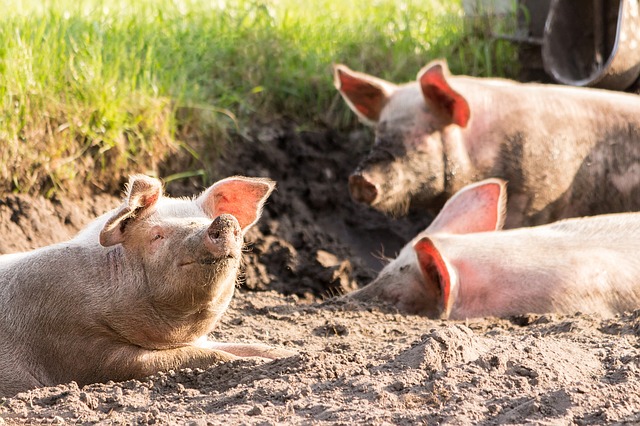Pig is one of the cleanest animals in nature because they don’t like eating in a dirty environment or excrete close to where they eat and stay.
Raising pigs for a commercial purpose is capital expensive, and profitable at the same time.
Therefore, maintaining quality health is very important.
Pigs are prone to several diseases, especially diseases caused by parasites and worms.
Anthrax Disease in Swine
One of the bacterial diseases affecting pigs is Anthrax,
Splenic fever is another name for anthrax, and Anthrax is also called desert fever.
This disease is caused by a rod-shaped bacterium, scientifically referred to as Bacillus anthracis.
Although anthrax is not a common disease in pig production, it can cause sudden death.
This is true if the disease is left untreated.
If you’re not sure about the disease your swine are suffering from, you can talk to your vet doctor.
There’s nothing to worry about since it can be controlled with antibiotics.
It takes different forms such as pharynx anthrax, intestinal anthrax, and systemic anthrax.
Symptoms of Anthrax in PIgs
The following are the common symptoms of Anthrax in pigs.
- High fever and dark mucous membranes.
- Feces with blood.
- Difficulty in breathing
- Nasal hemorrhage.
- Body Weakness
- swelling in the region of the neck, breast, and genital organs
- Poor coordination
- Respiratory or cardiac problem
- Respiratory Anxiety.
- Convulsions
- Sore throat,
- Lymph nodes in the neck and the abdomen
There could also be difficulty in swallowing and dripping dark blood from the body openings such as the mouth, nostrils, anus, and vagina.
Infected animals die after a few hours or some days of infection.
Apart from pigs, other animals such as cattle, sheep, deer, goats, and antelope can also be infected with anthrax.
Even men are susceptible. If you touch anthrax, the skin that comes in contact with the bacteria can start itching you and have spores.
Blisters can now form after a few days and can lead to skin ulcers.
When the spores get into the internal system, it becomes active, and divide rapidly, which causes illness in the host.
Illnesses such as joint pain coughs, depression, fatigue, anxiety, and OCD.
Infections from a sick pig to a healthy pig occur by contact (wounds) inhalation of dust containing anthrax spores or by insect transmission.
When conditions are unfavorable, the organism forms a spore and becomes very resistant which can only be killed by moist heating at a temperature of 90°C for 45 minutes or 100°C for 10 minutes.
Control of Anthrax in Pigs
The bacteria can survive in the soil for more than 24 years.
When a pig dies of anthrax disease, the such pig should be burnt, rather than sold or buried.
The place the pig stays before she died should be disinfected with a 2.5% solution of formaldehyde or a similar active solution.
The incubation period is usually 1-3 days and could be chronic in pigs.
The best way to minimize the chance of Anthrax disease in pig production is by vaccination using penicillin and oxytetracycline.
Penicillin, Doxycycline, Ciprofloxacin, and oxytetracycline are effective antibiotics that are usually recommended by veterinarians.
More so, It is very important to thoroughly cleanse and disinfect any object or equipment including clothing, footwear, exposed parts of the body of the livestock, and the attendant that had contact with a sick pig.

Growing up in a family deeply rooted in agriculture, I developed an early passion for cultivating the land, caring for animals, and exploring sustainable ways to improve farm productivity.
I’ve worked extensively across multiple areas of agriculture, food and cash crop cultivation, poultry farming, fish farming etc.
At FarmPally, I enjoy sharing practical insights drawn from real-life experiences to help farmers, pet owners, and agriculture lovers make informed, and sustainable decisions.

